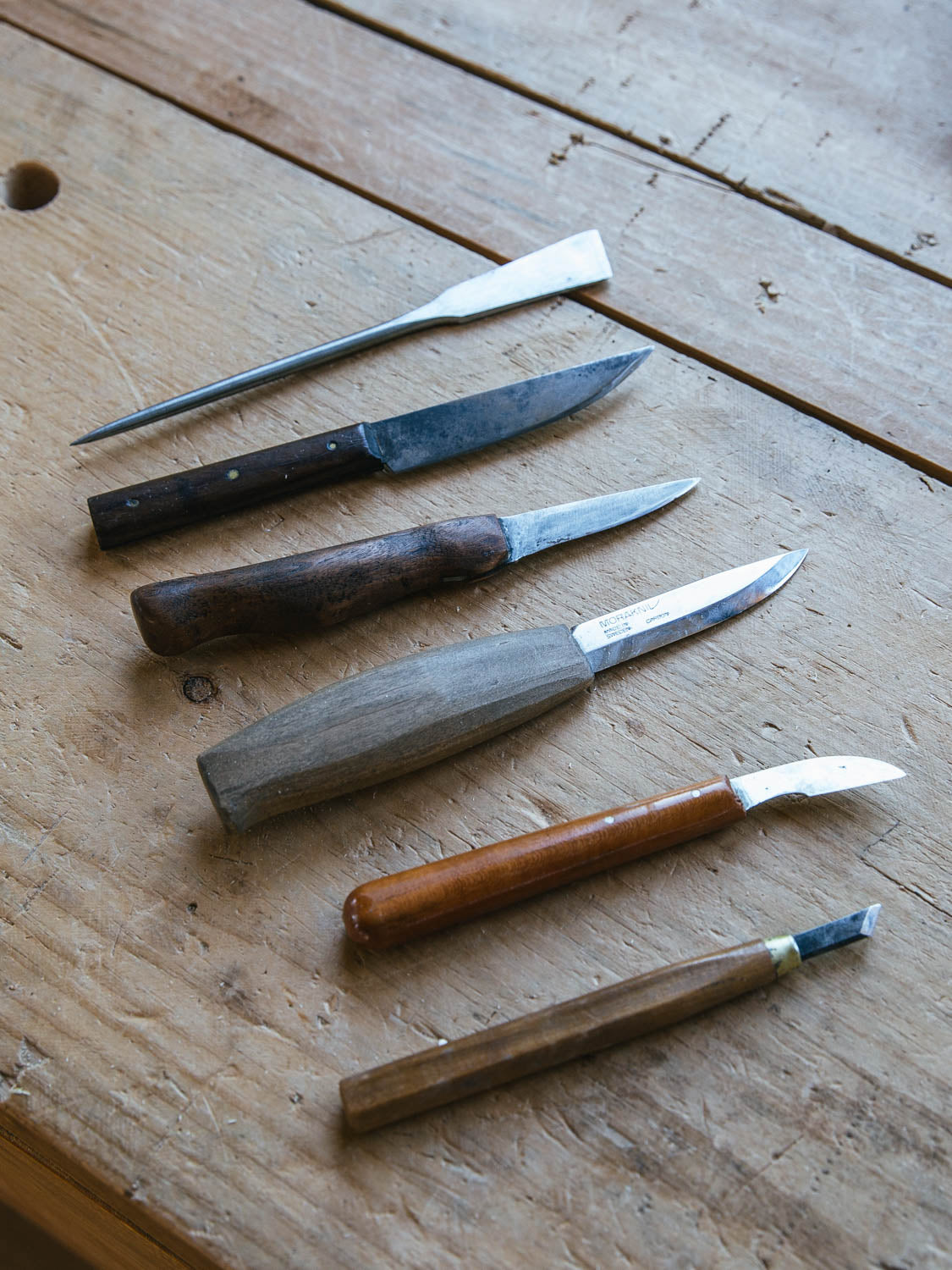
We live in an era of specialization – a time in which there exists a dedicated doodad for every conceivable circumstance one might find themselves in. We have special shorts just for running, hats for gardening (as opposed to any other outdoor sunny-day activities), and knives designed specifically for marking one side of a joint to another.

In the English joinery tradition, artisans used combination knife/awl “striking knives.” These tools would make a great addition to a horror film, because they are wicked sharp on both sides! I picked up this one secondhand somewhere along the way, and the first time I used it, I bent over to closely inspect my work… and then… I jumped back before it was too late. The tool has lived in my tool chest ever since.

I highly recommend these if you’re looking to remove one of your eyeballs.
There are a number of modern marking knives out there which are made by excellent toolmakers. They’re top-drawer craftsmanship, sometimes featuring exotic woods. They all make lines. One of the most lauded features of these modern specialized marking/striking knives is that that that they have a single bevel so that the flat of the tool lays against the perfectly 90° member. I’ve never quite understood the benefit of this. Aren’t we simply marking the point at which the two members intersect? How is the knife aided by riding along one of the members? Why is a single bevel better than a double bevel in this case? I’ve never quite figured that one out.

The fineness of the chip carving knife is preferred by some.
There are some folks who boast about how thin their blade is, and about how it makes scalpel-thin lines. (You couldn’t get more pinky-up than comparing your joinery to the craft of a surgeon.) This level of delicacy is fine for those of us who still have both eyes intact. But still. I like lines I can see. So, to my mind, chip carving knives or any blades that are “razor-thin” are right out.

So, what do I use to mark my joinery? I’ve always preferred a good-old generic double-bevel fixed-blade knife. There’s no maker or link I can provide you. The one I used for a while was a Victorian table knife, and the one I use now is nothing more than an old file ground to an edge and set into a handle. There’s no bevel magic or high-tech steel. It’s just a plain old knife. The only thing I have an opinion about it the length of the blade – 2.5" is good. Any more than that and it starts to get unwieldy.

So, I want to encourage you not to pander after specialist tools. Try a simple solution first; it turns out there’s a lot you can do with a plain old knife.
– Joshua

